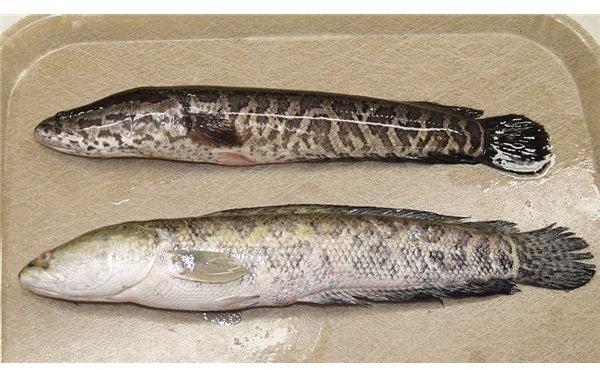
The northern snakehead has become invasively established in the Potomac River and threatens the Chesapeake Bay watershed. states ban the possession of live snakeheads. Since October 2002, live snakeheads have been banned (under the federal Lacey Act) from import and interstate transport without a special permit from the U.S. Francis River levees in Dunklin County in 2019.
:max_bytes(150000):strip_icc()/landwalking--snakehead--fish-appears-in-philadelphia-52729076-59e6422d03f4020011184e36.jpg)
The first northern snakehead recorded in Missouri was caught in a borrow ditch within the St. The second verified catch of an invasive northern snakehead in Missouri was on it was captured by an angler who was seining for bait at Duck Creek Conservation Area in Wayne County the snakehead was 13 inches long and estimated to be about 1 year old. Report any sightings of this invasive fish to MDC's Southeast Regional Office at 57. Photograph the fish, so the species can be positively identified. Kill the fish by severing the head, freezing the fish, or putting it on ice for an extended period of time. Remember, this fish is an air breather and can live a considerable amount of time out of the water. Do not release the fish or toss it up on the bank, because it could migrate back to the water or to a new water body. Snakeheads are on Missouri's Prohibited Species List, and live fish and viable eggs may not be imported, exported, transported, sold, purchased, or possessed in Missouri. Bowfins have the pelvic fins located farther back, near the belly.

The top of the head is typically indented (concave). The jaws contain many small teeth, similar to those of pike and pickerel. The markings may vary, but they are generally tan with dark brown mottling. argus) is the species most likely to be found in Missouri.

Globally, there are about 30 species all have a large mouth and sharp teeth, large scales atop the head, and eyes located far forward on the head - making their heads resemble those of snakes. Snakeheads belong to a pair of closely related genera of long, cylindrical fish from Asia and Africa: genus Channa and genus Parachanna.


 0 kommentar(er)
0 kommentar(er)
